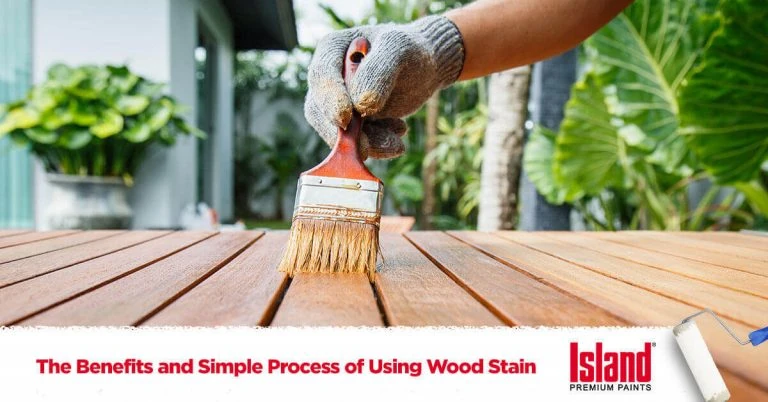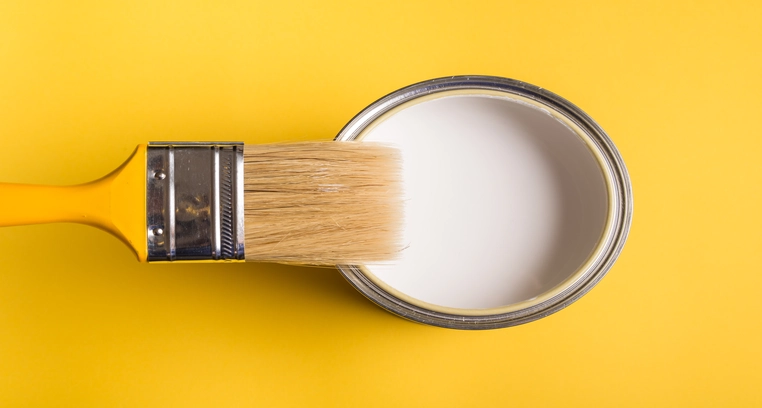Home Decorating Tips


Home Decorating Tips
How to Properly Use Wood Stain Paints
Posted on October 24, 2019
Last updated May 27, 2025
Wood stain is a popular choice for improving the look of wooden surfaces with its natural effect of highlighting wood’s grain. But the benefits do not stop with aesthetics! Read on for a refresher on the benefits and the process of applying wood stain.
How Wood Stains Work
Available in oil, resin and alkyd forms, wood stain acts as a binder that attaches to the pigments on the surface of the wood. Unlike wood paint, stain seeps and penetrates into the wood when applied. Why use stain over paint? Here are some of the advantages:
- Improves & Preserves Aesthetic Appeal The aesthetic appeal of wood lies in its natural look. Painting over this natural, visual texture diminishes that appeal. With stain, the grain of the wood is brought out and highlighted. Stains also come in a variety of shades. You may choose to darken or lighten your wood’s color, or opt for a clear and natural color.
- Prevents Rotting & Weakening Extremes of heat and cold can cause damage on unsealed wood! While too much sun may lead to discoloration, too much moisture can cause rotting and weakening. Versus paints, stains protect down to the inner layers of wood. Sealing with wood stain helps preserve the wood’s structural integrity from within.
- Easy & Simple to Use Taking out the priming step that’s mandatory in painting, stain becomes simpler to apply. Maintenance is easier, too, with re-staining needed only once every few years.
The Quick Process of Staining Wood
Especially if you’ve been doing DIY painting for a while now, you might find yourself intimidated by the different yet simple process of staining wood. Para sure, read the instructions for application and let these steps guide you:
Step 1: Make Sure You’re in a Well-Ventilated Work Area
Whether working indoors or outdoors, you have to make sure that there’s good airflow. Turn on fans, open windows or work in the wide space of your porch or garage. It’s important to understand that wood stains have chemicals that may affect your health when working too closely, or in a closed off room.
Step 2: Wear Protective Clothing
Thick yet flexible cleaning gloves and a face mask are a must when working with wood stains. These provide extra protection against fumes.
Step 3: Prep Your Surface: Sand, Clean & Fill Until Smooth
Even without the need for using primer, preparing your surface is still an important step in staining wood. Follow these points:
- Remove any previous paint, dirt or finishes by sanding down the surface with a piece of sandpaper. Coarse sandpaper with 40/60 grit works well in eliminating paint, dirt and finishes on wooden furniture.
- Dust the surface thoroughly with a rag. Finally, fill in or repair cracks and dents with wood filler
- Sand the surface and repeat the process until the surface is in its ideal smoothness.
Step 4: Apply Pre-Stain Conditioner
A pre-stain conditioner helps even out your stain when you apply it. Use a paint brush for spreading and coating your conditioner. Make sure strokes are even and following one direction. After application, wipe off the excess with a clean and dry rag, and let the conditioner sit for a period of time specified in your product’s data sheet.
Step 5: Stain Away
In smooth, even strokes following the grain of the wood, apply the stain on top of the pre-stain. Use a clean, dry paint brush or rag until the surface is completely covered. Leave it for the appropriate drying time, as listed on the product’s instructions. You may choose to apply a second coat.
Read about Island Premium Paints’ Natura Oil Wood Stain, along with more Para Sure tips for home improvement.
Island Premium Paints is the first and only locally produced paint with a Product Satisfaction Guarantee
.
Our Products
Our line of high quality paints and products will give your home or project the vibrancy it needs.
Explore Colors
Ready to explore colorful possibiliies today? View our popular paint colo combination palettes for great color schemes and room design ideas for interior and exteriors.




